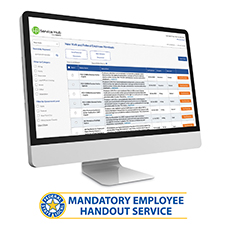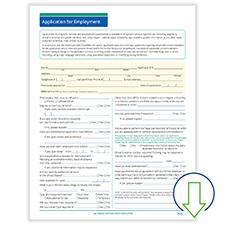
‘Quiet hiring’ is the latest buzzword among business owners and HR professionals. But why is it a growing phenomenon — and how is it shaping workforces today?
It may be a catchy phrase for the times we’re in, but the concept of quiet hiring is nothing new. Simply put, it involves shifting current employees into new roles and responsibilities to meet business needs, rather than hiring outside candidates. It’s so prevalent that it ranked among the top nine work trends for 2023 by technological research and consulting firm Gartner. ‘Going within’ is a practical approach during challenging economic times and a labor shortage, offering numerous tangible benefits to employers.
The Advantages of Quiet Hiring vs. Traditional Hiring
You may be slowing down your hiring efforts right now, but that doesn’t supersede your business goals and priorities. There are a handful of key benefits to practicing quiet hiring, including:
- Reduces expenses — Recruiting, qualifying and onboarding outside candidates can be a time-consuming and costly undertaking. Pulling from your existing talent pool prevents these upfront expenses and typical drain on HR resources.
- Closes skill gaps — By training and ‘upskilling’ current employees to maximize internal roles, you’re addressing skill deficiencies as well as providing new opportunities for growth and development.
- Decreases burnout — Stagnancy and lack of career advancement is a major reason employees become disenchanted with their jobs. Providing fresh opportunities and lateral or upward movement can boost engagement, productivity and overall morale.
- Diminishes employee turnover — It can be daunting for employees to enter a competitive and fast-moving job market. But if they’re able to bring more skills and expertise to their current situation, they’re more likely to stay, which creates more stability within your business (and prevents the dreaded ‘quiet quitting).
- Celebrates top performers — While quiet hiring impacts employee productivity and morale, it can also serve as a strong recognition tool for those who go above and beyond. It demonstrates that you’re aware of what employees are accomplishing and capable of doing going forward.
In a recent Monster poll, 63% of employees view ‘quiet hiring’
as an opportunity to learn new skills.
Tips for Effective Quiet Hiring
An important note regarding quiet hiring is that it’s not about asking employees to take on more work; instead, it’s identifying where talent is needed within your organization and connecting employees to those needs.
When asking employees to assume new responsibilities as part of quiet hiring, be sure you:
- Set clear expectations so they know what to anticipate, especially whether the changes are temporary or permanent
- Provide the training, guidance and support tools they need to deliver results
- Explain how shifting responsibilities relate to their long-term career goals, such as advancing them in their roles or qualifying them for a promotion
- ‘Give to get’ and compensate employees appropriately through bonuses, extra time off, or flexible hours and working conditions
Use Employment Testing to Make More Informed Decisions
At its core, quiet hiring allows employees to gain valuable new skills or strengthen existing ones, which is a win-win for both them and your business. For a fair, balanced approach to upskilling existing employees, you should review past performance, avoid favoritism and follow consistent criteria to examine their qualifications. Need help determining where employees stand with certain skills and aptitudes? Employment testing from HRdirect can help you pinpoint the right employees for your quiet hiring initiatives.






 Shopping cart
Shopping cart













